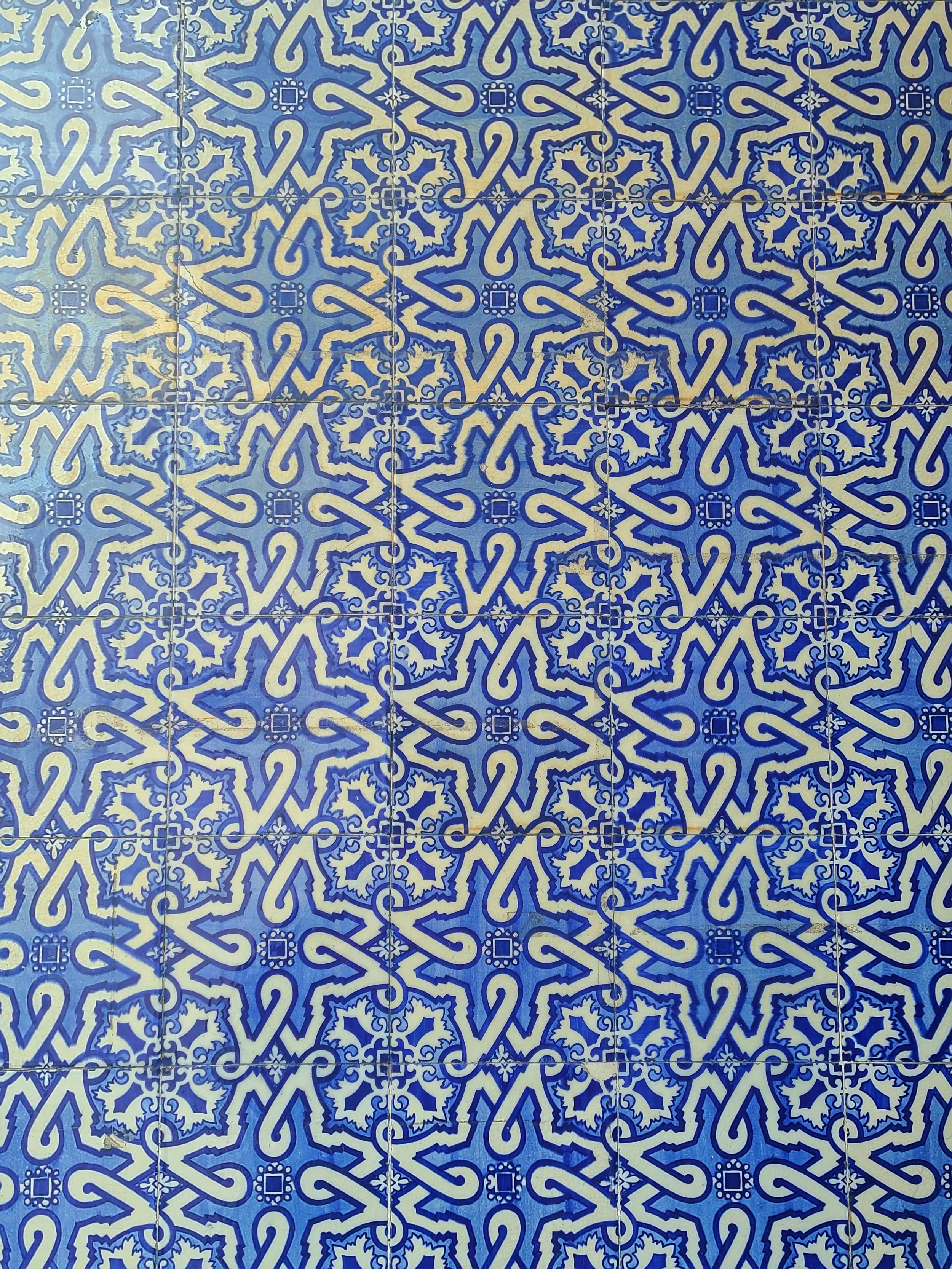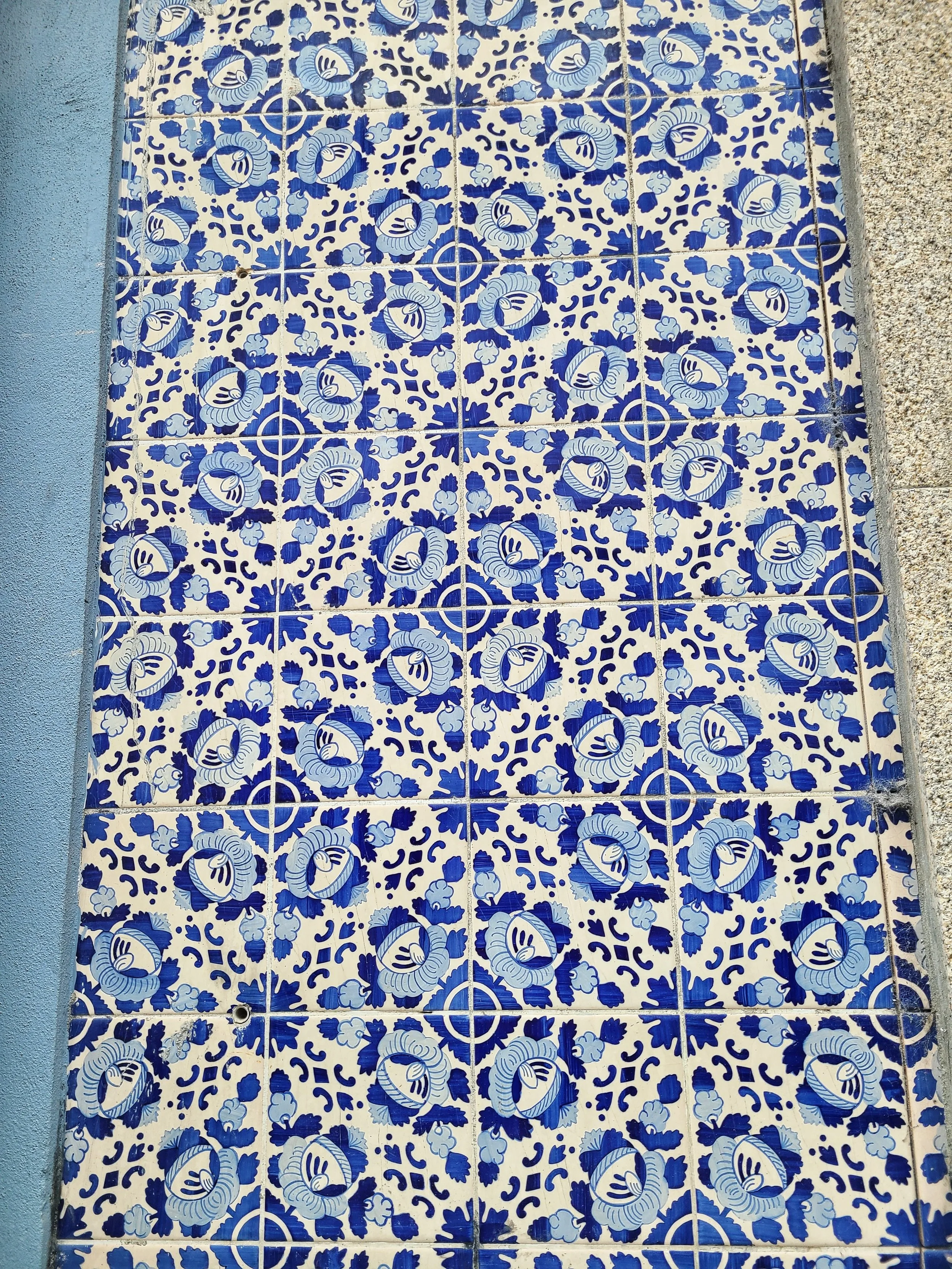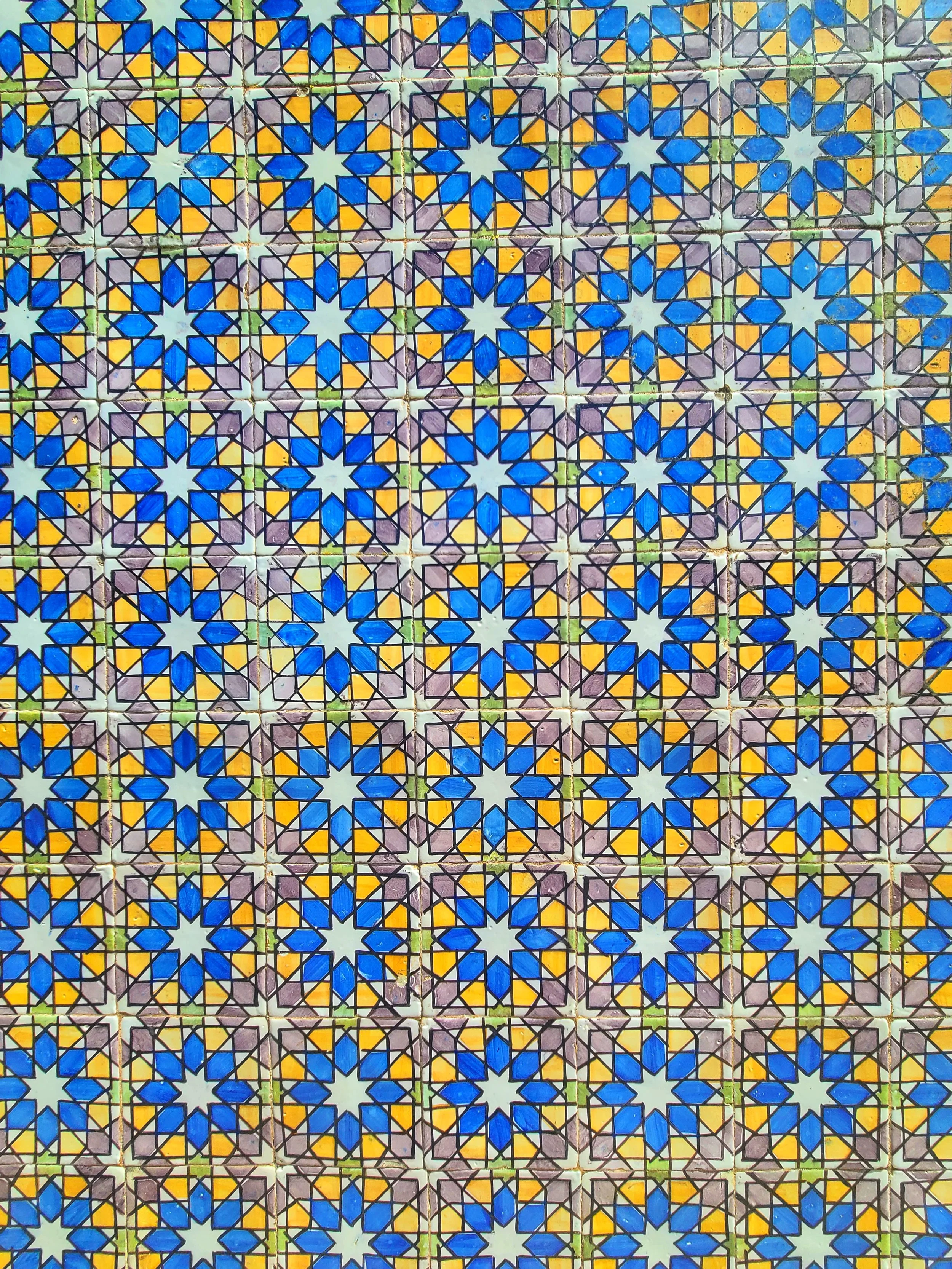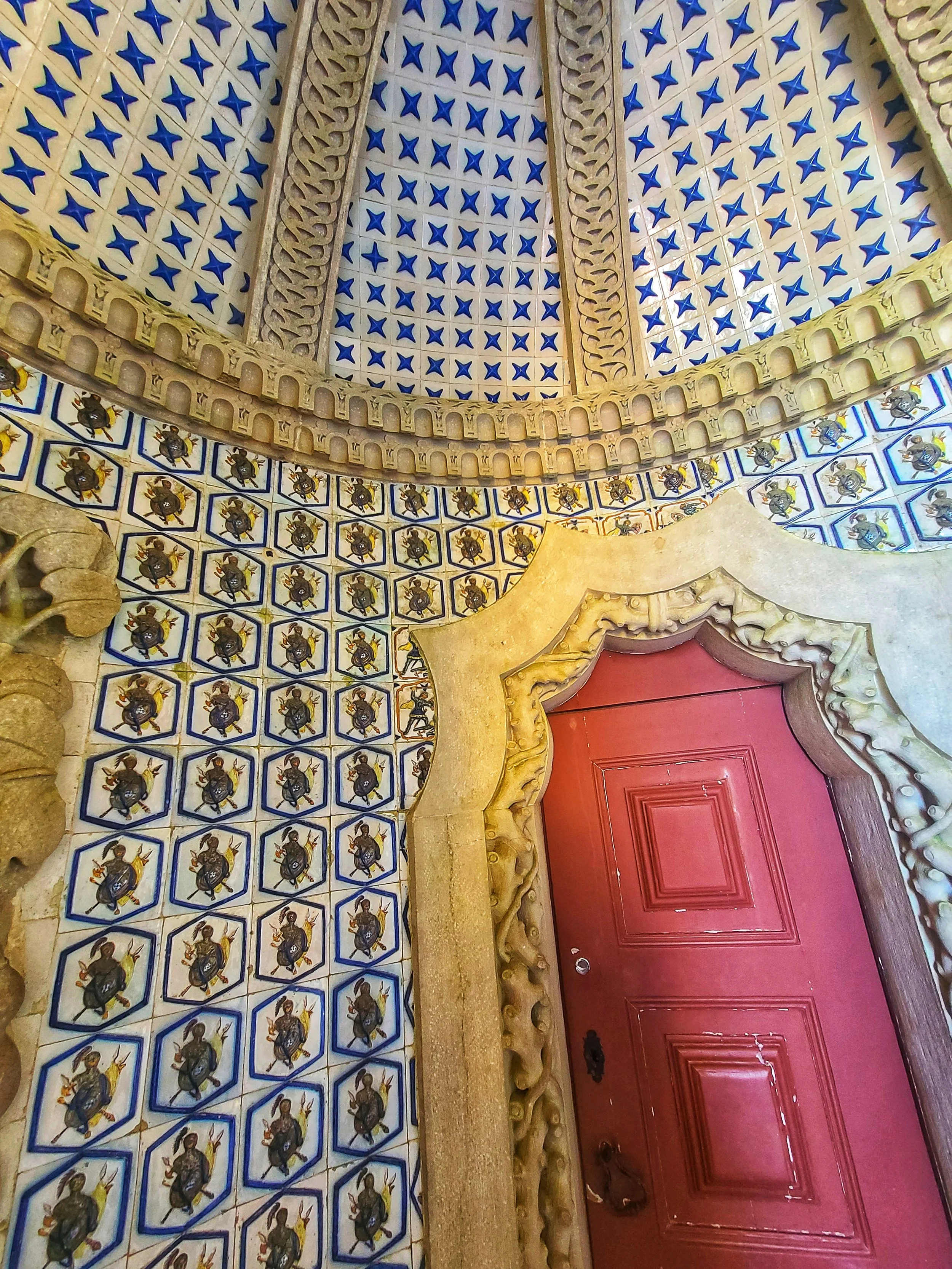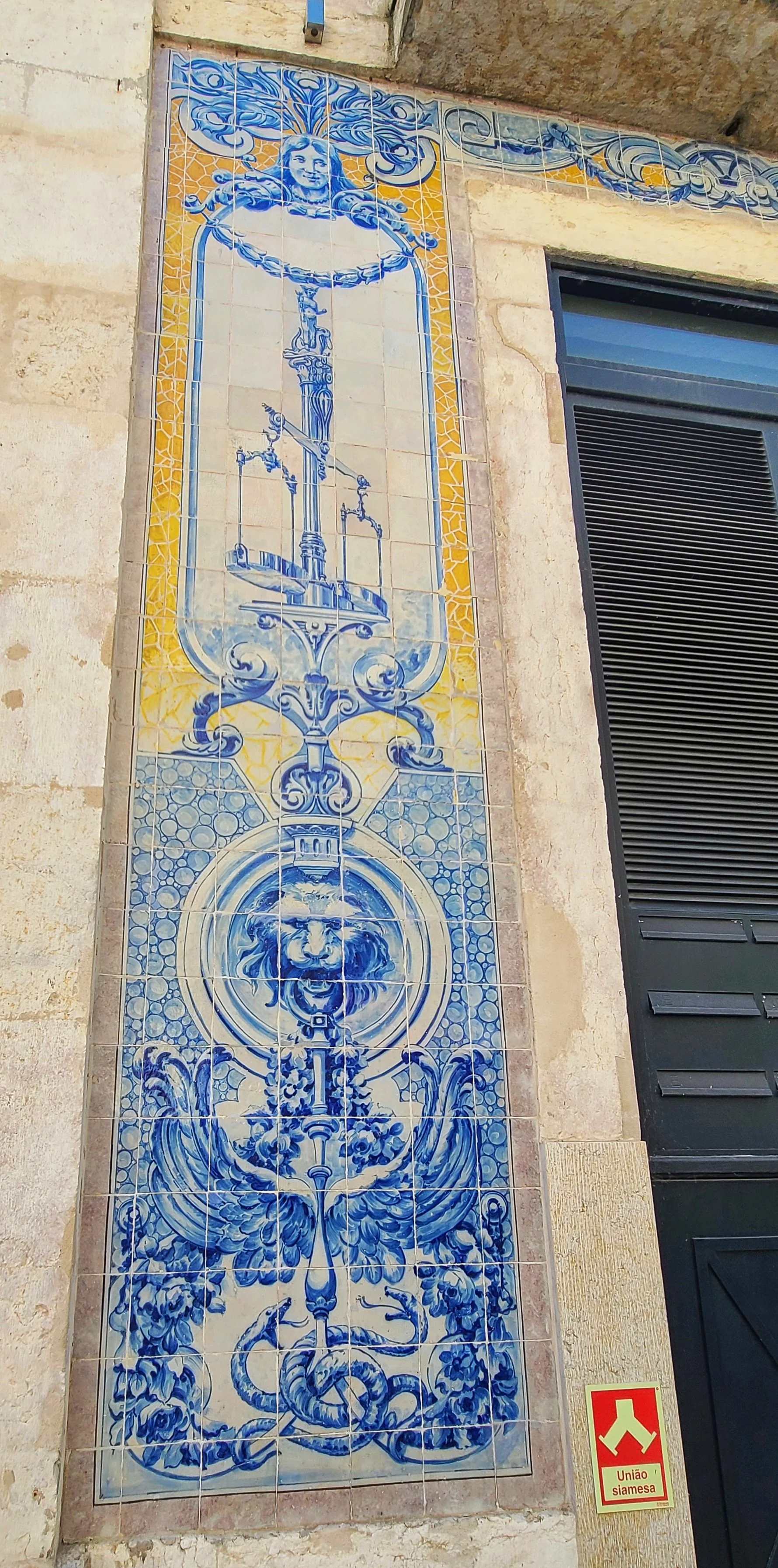Portugal’s Azulejo Tiles
Blue and white azulejo tiles in Portugal.
Portugal, a land of rich cultural heritage, is renowned for its distinctive and vibrant tiles known as azulejos. These beautiful hand-painted ceramic tiles have adorned the façades of buildings, palaces, churches, and even humble homes for centuries, creating a breathtaking tapestry that tells the story of the nation. The history of these iconic azulejo tiles is intertwined with Portugal's past, reflecting its artistic prowess, historical events, and enduring cultural traditions.
How to Correctly Pronounce Azulejo
In Portuguese, azulejo is pronounced “ah-zoo-le-zhoo” with emphasis on the second to last syllable (le). The plural form, azulejos is similarly pronounced as “ah-zoo-le-zhoosh”.
A Brief History of Azulejos
The origin of azulejos can be traced back to the 13th century when the Moors introduced decorative tilework to the Iberian Peninsula. These early tiles were geometrically patterned, displaying intricate designs. The term "azulejo" itself is derived from the Arabic word "al-zulayj," meaning "small polished stone”.
As a bulk of the original tiles were green or blue and because many often today’s iconic azulejos are blue and white, people often incorrectly assume that the name “azulejo” is a cognate that has to do with “azul” which means “blue” in both Portuguese and Spanish, but it is simply a false cognate.
It was during the 15th century, with the advent of the Portuguese Renaissance, that azulejos truly flourished. Inspired by Moorish aesthetics and the rising popularity of decorative tiles in Spain and Italy, Portuguese artisans embraced this art form and transformed it into an integral part of the country's cultural identity. Flemish artists in Lisbon began creating the azulejos in a style that mimicked the Dutch blue and white Delft pottery, creating what we now immediately think of as azulejos. Fun fact: Did you know that Delftware itself actually is an imitation of Chinese porcelain?
Who Were the Moors & How Are They Tied to Azulejos?
During the Middle Ages, Europeans dubbed Muslim people of Iberian Peninsula (modern day Spain and Portugal) and Northern Africa, “Moors”. From the 8th Century C.E. to 1492 C.E., the Christian kingdoms of Spanish and Portuguese waged military campaigns (the Reconquista) against the Moors to reconquer the Iberian territories. With the Moors living in the territories for so long, it makes sense that their Islamic culture left long-lasting impacts on Spanish and Portuguese culture. Not only were the azulejo tiles an impact, but also the style of the tiles, geometrical patterns and a need to entirely fill the space, known as horror vacui (Latin for “fear of empty space”). Arabesque decoration in Islamic art often thoroughly and densely fills in all white space.
Horror vacui with azulejos at Sintra Palace in Sintra, Portugal.
Moreover, you may be wondering why there is so much blue connected to azulejo. The initial impact is again the Moors and their Islamic culture. The semi-precious stone lapis lazuli (meaning “stone of the sky”) was highly prized for its rich blue color. Outside of water and the sky, blue is a rather rare hue to occur in nature. During antiquity, the stone was believed to be connected with knowledge, insight, and magical powers, and was frequently used to adorn mosques. Blue patterned tiles and mosaics are a significant recurrence in Islamic art.
Artistic Expression and Cultural Symbolism through Azulejo
Azulejos are much more than mere decorations. They are a form of artistic expression that tells stories, celebrates historical events, and preserves cultural symbols. From scenes depicting religious narratives to majestic landscapes and mythological tales, these tiles serve as visual chronicles of Portugal's past.
As a country with a vast seafaring history riddled with maritime explorations, azulejo is a tradition that left its mark in many places where Portugal had colonies including Brazil; Angola and Mozambique; Goa, India; and as far as Macau, China.
Baroque style azulejos featuring serpents, a lion and scales in Lisbon, Portugal.
One of the most iconic uses of azulejos is in the portrayal of azulejo panels or azulejo murals. These large-scale compositions, often found on the facades of buildings, combine multiple tiles to form intricate and visually stunning images. These panels depict significant events such as battles, maritime discoveries, and royal processions, offering a window into the country's history and culture.
The Museu Nacional do Azulejo (National Azulejo Museum), housed in a 16th-century convent, in Lisbon features many historical examples of azulejo, including the Grande Panorama de Lisboa, a hand-painted blue tiled panoramic bird’s eye view of Lisbon and its landscape before the city’s devastating earthquake and subsequent tidal wave in 1755. This Baroque azulejo mural used to be displayed in a circular room inside a nobleman’s palace.
Azulejo Styles and Techniques
Over the centuries, various styles and techniques have emerged, adding diversity and depth to Portugal's azulejo tradition. The Mudejar style, influenced by Moorish design (also called azulejo Hispano-Mourisco), is characterized by geometric patterns and intricate detailing. The Baroque style, popular during the 17th and 18th centuries, introduced complex painted compositions with ornate elements.
In addition to their aesthetic appeal, azulejos also serve functional purposes. They are more fire-proof and humidity resistant than wood and are excellent insulators, protecting buildings from extreme weather conditions while providing thermal comfort. The vibrant colors and glazes used in azulejos are designed to withstand the test of time, ensuring that these decorative tiles endure for generations.
Azulejos on the façade of the Capela das Almas (Chapel of Souls) in Porto, Portugal, depict scenes from the lives of saints.
Preservation and Contemporary Adaptations
The preservation and restoration of azulejos have become a significant focus in recent years. Several museums, such as the National Azulejo Museum in Lisbon, have dedicated themselves to showcasing the historical and artistic value of these tiles. Efforts are also underway to protect and restore azulejos on heritage buildings, ensuring their longevity and continued cultural significance. Lisbon even has their own azulejo preservation task force, “SOS Azulejo Project”, initiated by the Judiciary Police, the division responsible for tackling crimes related to cultural heritage. Stealing azulejos from buildings can land thieves an 8-year prison sentence.
For locals and tourists alike, tile shops sell azulejos in hundreds of patterns, including many in old-style traditional styles making replacing a home’s fallen tile or taking souvenirs back home easy. Even contemporary artists and designers have embraced the azulejo tradition, infusing it with their own modern elements and interpretations, expanding the possibilities of azulejo application with innovative designs that now branch out beyond adorn building façades and monuments to public spaces like fountains and park benches, home décor like coasters and kitchen backsplashes, jewelry and fashion.
Azulejo The Famous Portuguese Tile
Portugal's azulejos are a testament to the country's deep-rooted artistic heritage and cultural pride. As vibrant and captivating as ever, these tiles continue to grace the streets of Portugal, captivating locals and visitors alike. The 500-year tradition of azulejos serves as a bridge between the past and the present, reminding us of the enduring beauty and storytelling power of this unique art form. By preserving and adapting the art of azulejos, Portugal ensures that its cultural legacy lives on, inspiring future generations to appreciate the timeless allure of these beautiful tiles.


